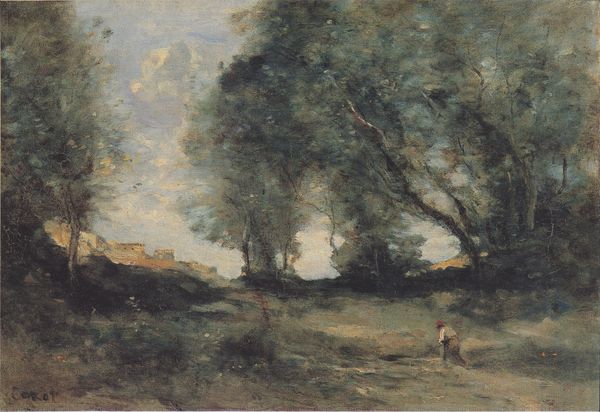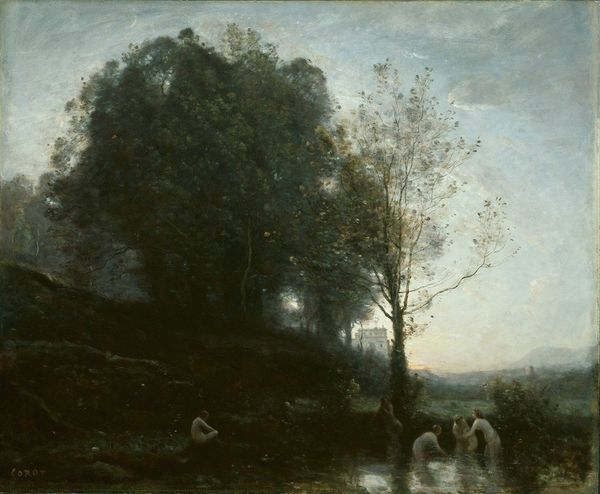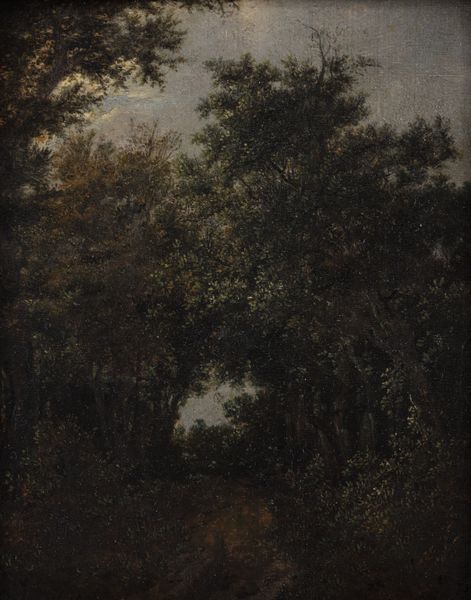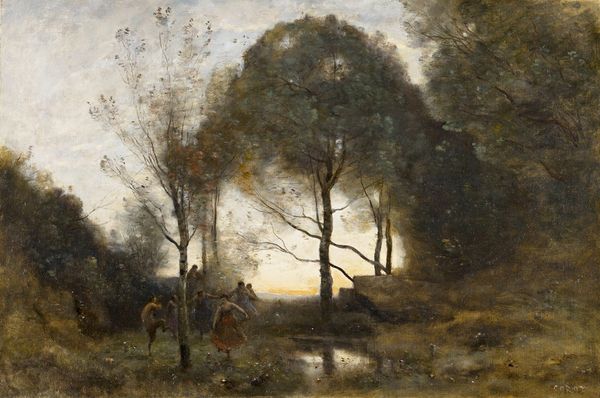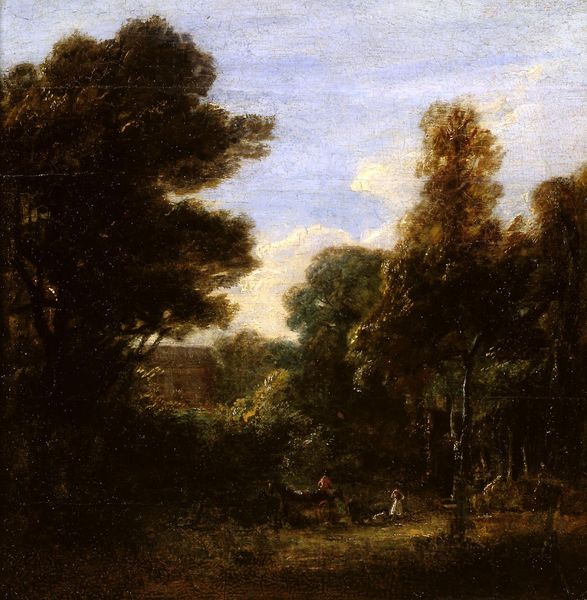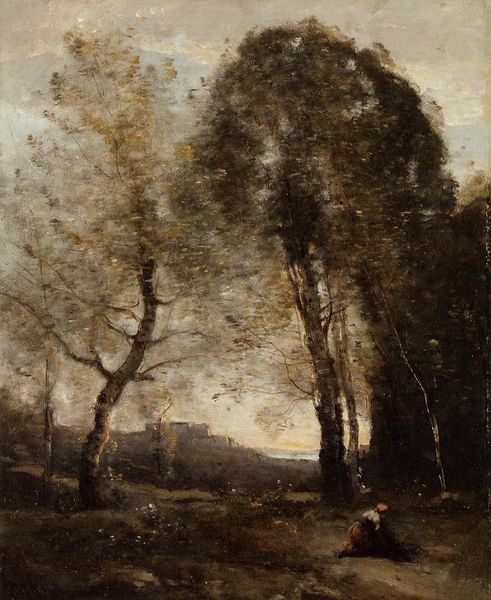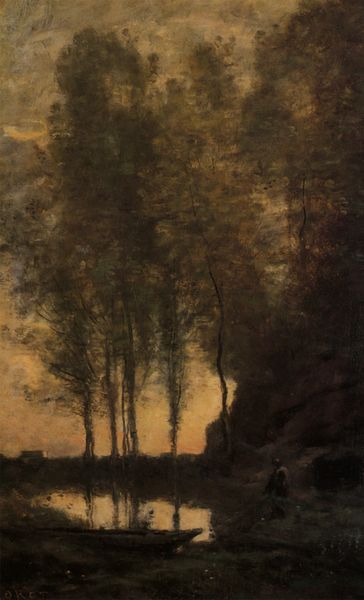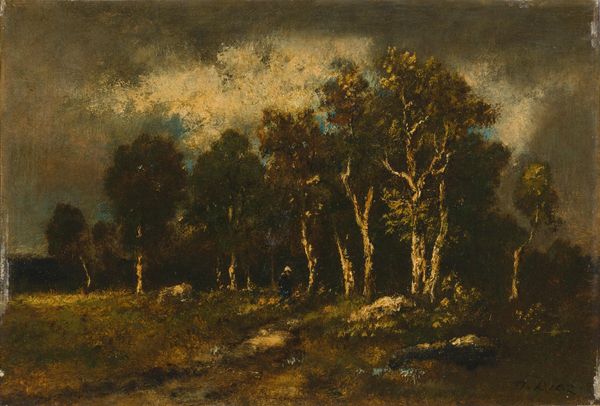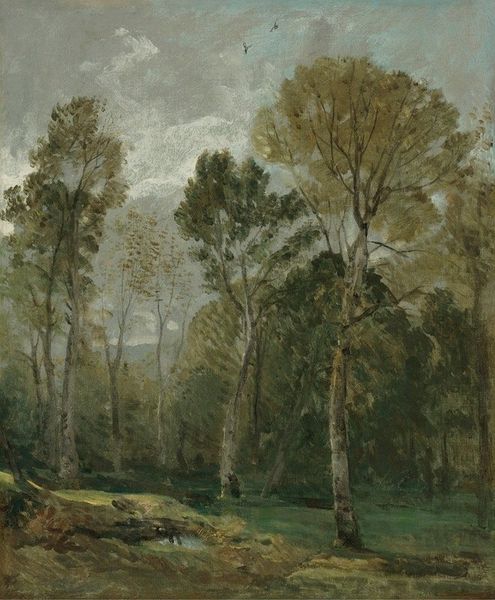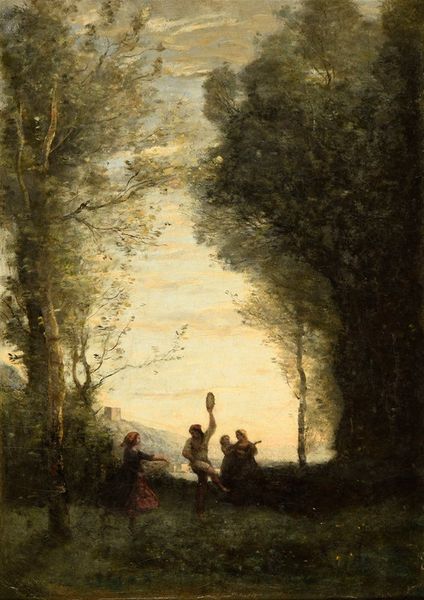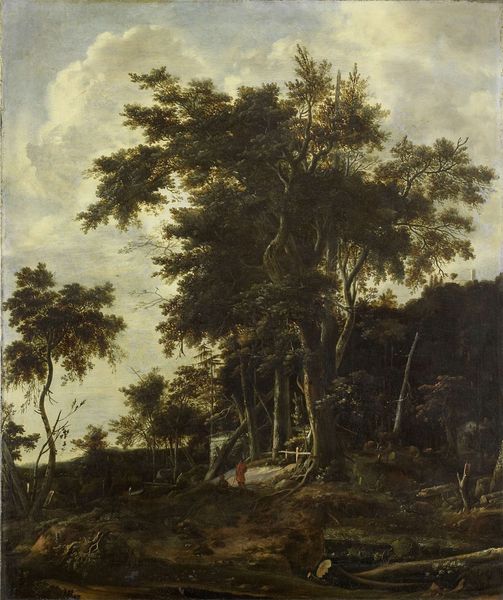
Dimensions: 82.6 × 66.4 cm (32 1/2 × 26 1/8 in.)
Copyright: Public Domain
Curator: I’m struck by the emotional weight of the scene. There’s a melancholy, almost pre-industrial, quality to it. Editor: Let's turn our attention to "Souvenir of Italy," an oil on canvas painted between 1855 and 1860 by Camille Corot, held here at The Art Institute of Chicago. Corot was deeply involved in landscape and the emerging practice of painting "en plein air." Curator: The arrangement of trees creates an interesting symbolic divide; the dark forest encroaching and the soft, golden distance behind. Light fighting shadow. There is something that almost feels ancestral about those shapes. I keep thinking of how the forest represents the "dark unknown" within folktales across diverse cultures. Editor: And isn't that thematic contrast interesting within the period context as well? Courbet was painting stone breakers, Millet sowers... Corot's “Souvenir” leans into Romanticism perhaps, yet prefigures the more sustained investigations of light that the Impressionists would be noted for. In many ways, he bridges a significant political shift as painting began incorporating an honest depiction of the life of common people and moved away from Academic tradition. Curator: Yes, but while revolutionary ideas churned in Parisian salons, "Souvenir of Italy" is evocative of much older archetypes: consider how the dog functions across classical and renaissance art, particularly in pastoral scenes or paintings of Artemis or Diana. We may be witnessing echoes of antiquity reworked within 19th-century French art. Corot, though subtly, also depicts several human figures moving away from us in to the sunlight of Italy. The landscape offers serenity, an almost paradisiacal vision. Editor: But it is the subdued palette that fascinates me; even the light has a kind of filtered quality. Almost as if memory itself mutes the colours. It brings up Walter Benjamin and his discussions on collecting—specifically the souvenir’s ability to distill something profoundly complex, reducing historical nuance and flattening narrative depth, right? "Souvenir of Italy" embodies that tension. Curator: A tension, ultimately, that fuels endless discussions. Editor: Precisely, the dialogue never ceases as interpretations change through different socio-cultural lenses.
Comments
No comments
Be the first to comment and join the conversation on the ultimate creative platform.

